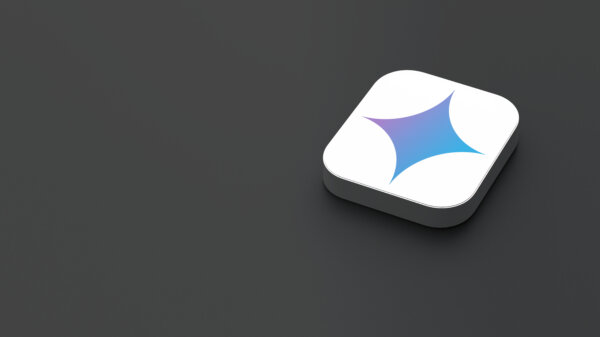Maximising Google Ads with Shopify
Shopify is one of the most popular platforms for eCommerce, with easy set up and customisation options for every size of business. There are apps for almost anything you might want to do with your store, including for Google Ads, making it easy to get campaigns up and running to build your online presence.
The big draw for Shopify users with Google Ads is the Shopping Ads format, showcasing your product at the top of the Google results page. It also gives you access to advertising space around the web, including retargeting display ads, video ads, and in-app ads, reaching your potential customers wherever they might be. Here we’ll take you through the process of linking Shopify to Google Ads, optimisations and utilising Shopify data to improve performance
Linking Shopify to Google Ads
If you want to expand your Shopify business using Google Ads, the first step is to get your Ads account set up, including tracking. You’ll then need a Google Merchant Center account, which will link your Shopify product feed with your Google Ads account.
Tracking Google Ads conversions with Shopify is fairly standardised, with just a small amount of code tweaking required. You can use Google Ads conversion tracking, installing it as an ‘additional script’ from Google ads on the ‘Checkout and accounts’ page on Shopify, following this guide. Alternatively, you can use Google Analytics tracking – once GA4 is set up, basic eCommerce events are automatically tracked by Shopify, and you can import that into Google Ads.
Once everything’s linked up, there is a campaign format called ‘Performance Max’ to show specific products when people are searching or otherwise showing interest in your products. It’s incredibly visual, so it’s important to have good imagery. Your products will show at the top of the Google results page, as well as in the ‘products’ tab, in both sponsored and free listings.
The same feed can also be used to set up dynamic remarketing campaigns, which show people the products they’ve previously looked at in your store while they’re browsing online.
You can also get access to free shopping listings by linking to Google Merchant Center and opting in.
Optimising your Shopify feed for Google Ads
Unlike standard search marketing, Google Ads Performance Max / Shopping ads don’t use specific keywords to target users. Instead, they use information from your Shopify product feed to match users with specific products. Titles and descriptions are key, plus product categorisation details. The performance of your ads, particularly the click through rate, will affect how much you pay for every click, so by making your ads as attractive and relevant as possible you’ll save money.
When you first sync up your Shopify feed you’ll probably have a set of default descriptions and titles from your website. These can be optimised for search engines by switching the Product Title Preference to “SEO product title” within settings. Titles should be specific, covering the product name and brand (if different to your shop name), key details including any size or colour variation, and use as many of the available 150 characters as possible. Always start with the most important aspects as usually only the first 70 characters will be visible. For example, “Distinctly water bottle” could become “Distinctly metal water bottle 500ml with sports lid | Matt pink”. Far more descriptive, far more likely to match if someone is searching for a “metal water bottle” or “pink water bottle” or “metal bottle with sports lid”.
Similarly the description needs irrelevant information stripped out and replaced with specifics. Include product features, technical specifications and visual attributes, within the first 160–500 characters. You get up to 5,000 characters if you really want to write an essay on it, but focus on the early content. It’s important to only describe that specific product. Don’t include information that might confuse Google such as similar or compatible products or accessories.
If you’re struggling with the limits of the Shopify app for titles or descriptions, you can add a supplemental feed in the GMC, which allows you to separate the organic and paid product titles / descriptions.
Make sure your Shopify Product Category is correct, and meta fields if available. For example, don’t have a ‘squirrel proof bird feeder’ listed under ‘squirrel feeder’. This makes it easier for Google to understand what your product is, making targeting much more accurate.
Using Shopify data to improve Google Ads performance
The Shopify Analytics dashboard can help you review Google Ads performance alongside your other marketing channels, giving you a huge amount of information.
You can identify your best selling products and break those out into more specific ad campaigns, or spot any products that are likely to go out of stock soon and pull back budgets. If specific products just don’t sell through Google Ads, you can reduce the budgets and focus on what does work. If you want to start getting clever, you can even base your bidding and campaign structure on profit margin using Shopify data.
Customer segmentation can identify key audiences and inform your Google Ads targeting, whether that’s geographic, demographic or psychographic. Create personas based on user activity, then target them through Google Ads or other channels using messaging that resonates specifically with them.
“Top online store searches” offers insight into what people aren’t finding when they land on your side. Consider adding sitelinks or changing your landing pages to provide a more relevant experience, or even reviewing your overall site structure.
“Sessions by device” can tell you how you’re performing on mobile vs desktop and offers an early indication of poor mobile experience, which will harm your conversion rates as well as making your Google Ads clicks more expensive in a mobile-first world.
There are a lot of metrics available, and it’s worth doing a deep dive into them on a regular basis to identify any bottlenecks for your site overall, or Google Ads in particular. Nothing in eCommerce is static, and campaigns and product data need to be regularly reviewed and refreshed to make sure you’re making the most of your advertising.
Shopify is a popular platform for a reason. It helps drive eCommerce success for thousands of businesses, and by linking it with Google Ads you can reach even more potential customers. It’s important not to overlook the huge amount of data it can offer to optimise your campaigns, and to make sure you’re not just using the default data and feeds.
This post has only touched on using Shopify with Google Ads. There’s a whole other world of social advertising with Shopify, where you can sync your store with social media platforms to allow customers to shop directly within their apps. Every Facebook or Instagram post becomes shoppable, every TikTok or Youtube video links to your Shopify store, letting people buy in the moment.
Once it comes to running the campaigns it helps to have an expert on board to structure and optimise based on best practices. If you want to take your Shopify store to the next level, read more about our Paid media expertise and get in touch with us today.



